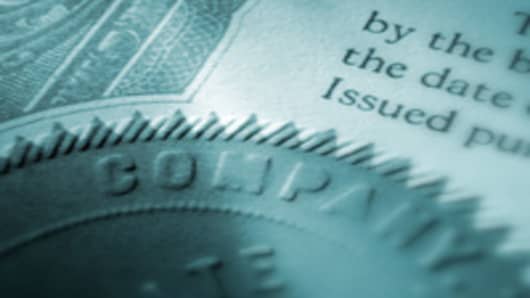Investors may be avoiding high-yielding dividend stocks this year, but they're snapping up high-yield bonds.
Investor demand has surged for so-called junk bonds, or fixed-income securities that don't have the B-level or better ratings that Treasurys, municipals and top-flight corporates carry.
In fact, last week marked a fresh record for junk bond offerings, with $19.7 billion coming onto the market through 27 new deals, according to data from Dealogic.
That was nearly four times the average weekly issuance so far in 2012 and broke a record that had stood since May 2011.
The surge toward junk has come as investors remain wary of the resurgent stock marketyet look to increase risk in their portfolios amid an uncertain time as well in global credit markets.
"High yield is at a sweet spot in the cycle here," says Robert Tipp, chief investment strategist at Prudential Fixed Income in Newark, N.J. "The market has improved and yields have begun to come down. Fundamentals are also improving."
High-yield has modestly outperformed the bond market as a whole, with a 2.7 percent return as measured through a proxy exchange-traded fund, the SPDR Barclays High Yield.
Of course, the stock market rally, with the average US equity mutual fund gaining 7.5 percent, easily has surpassed bond gains. But fund flows show few retail investorshave participated in the surge, and stocks with high dividend yieldhave been the worst performers.
Instead, investors have been looking for places where return is healthy but with a good degree of safety.
"You have a backdrop where there's a lot of money that wants to get better return, but people are not willing to take the risk of going all the way into stocks," Tipp says.
Lower-quality issues fared best in January, with triple-C paper gaining 4.93 percent against returns of 3.07 percent for single-B and 2.08 percent for double-B, according to Citigroup. In sectors, building and building products led the way with 5.58 percent return while transportation gained 4.5 percent.
To be sure, where the high yield market goes from here is subject to several highly volatile factors, in particular European sovereign debt defaults, Federal Reserve monetary policy and a retreat in U.S. economic growth.
But issuers are betting that those factors won't prevail — volume has come to $39.5 billion so far, which actually is a shade below the same point from 2011's $45.6 billion, but five to seven times higher than the dour crisis days of 2008 and 2009, according to Dealogic.
Confidence in high yield stems from believing that the risk one takes on buying a low-rated bond is worth the reward it will pay so long as the economykeeps progressing and merger and acquisition activity remains strong. The latter is considered a lynchpin for junk-bond growth, and while M&A had a slow January there is considerable belief it it will heat upas the year progresses.
"My philosophy remains (to) break free from financial represssion, do your own due dilligence. If you can get comfortable with that, the opportunities are pretty big," says Kevin Ferry, president of Cronus Futures Management in Chicago. "The question is confidence. The reality is, just like an amoeba slogging out of the soup, the economy is finding a way."
Ferry thinks investors have been flocking to Treasurys on overblown fears both about the U.S. economy and to some extent the European sovereign debt problems — at least insofar as how both situations will impact the riskiness of lower-rated bonds.
"To participate (in high-yield) is to openly recognize that your vision of the future is stronger and longer than anyone else's is," he says. "If you don't believe in the end of the world, go play elsewhere (than Treasurys.) Don't tell me that a 10-year is at 1.5 (percent). Tell me where I can get more."
The primary drawback for high grade may, in fact, be their popularity.
Prices for junk bonds, which rise as yields fall , are "trading not at huge premiums but at gigantic premiums," says Marilyn Cohen, president of Envision Capital Management in Los Angeles.
As such, she advises investors to consider using the ETFs — either the Barclays JNK fund or the iShares iBoxx High Yield fund — which allow investors to participate in the market but also leaves them with easier entrance and exit points than buying the bonds themselves. ETFs are composed like mutual funds but trade like stocks and can be bought or sold anytime.
"I don't think anything is cheap. Munis are overdone, investment-grade corporates are kind of a joke on investors," Cohen says. "I am very tentative, hunting and pecking around. It's a patient person's game now."



